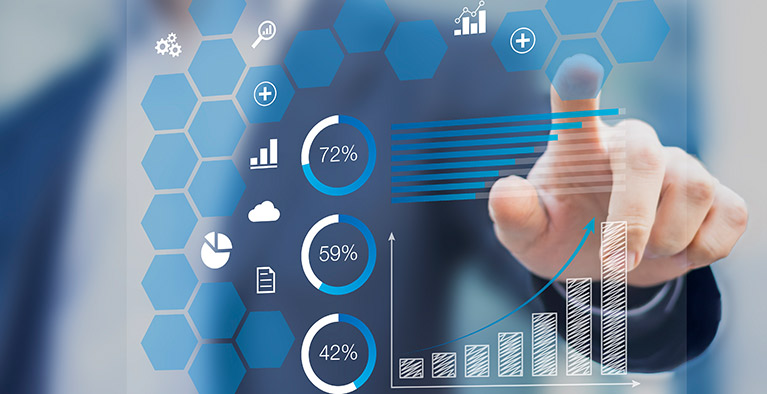Real-Time Data Processing: Revolutionizing Modern Data Management

Real-Time Data Processing: Revolutionizing Modern Data Management
The Real-time data processing has become an integral part of modern data management strategies, enabling organizations to analyze and respond to data as it is generated. This approach contrasts with traditional batch processing methods, which involve collecting and storing data for future analysis. Real-time processing provides significant advantages in various industries, from finance to healthcare. This article delves into the fundamentals of real-time data processing, its benefits, use cases, and the technologies that power it.
Understanding Real-Time Data Processing
Definition and Core Concepts
Real-time data processing refers to the continuous input, processing, and output of data with minimal latency. The goal is to handle data streams and make decisions instantly or within a very short timeframe. This method ensures that information is up-to-date and actionable as soon as it is received.
Key Components
Data Streams: Continuous flow of data generated by various sources, such as sensors, social media feeds, or transaction logs.
Stream Processing Engines: Tools and platforms that process incoming data streams in real time. Examples include Apache Kafka, Apache Flink, and Amazon Kinesis.
Event Processing: The practice of detecting, analyzing, and responding to events in the data stream. Complex Event Processing (CEP) is a technique used to identify meaningful patterns and relationships in real-time data.
Benefits
Enhanced Decision-Making
Real-time data processing allows organizations to make informed decisions quickly. By analyzing data as it arrives, businesses can respond to market changes, customer behavior, and operational issues with agility and precision.
Improved Customer Experience
Organizations can enhance customer satisfaction by providing timely and personalized services. For instance, e-commerce platforms can offer real-time recommendations based on browsing behavior, and financial institutions can detect and prevent fraudulent transactions immediately.
Operational Efficiency
Real-time features processing helps optimize operations by identifying and addressing inefficiencies promptly. For example, manufacturing companies can monitor equipment performance in real time, predicting maintenance needs before failures occur.
Use Cases of Real-Time Data Processing
Financial Services of Real-Time Data Processing
In the financial sector, real-Metrics data processing is crucial for activities such as algorithmic trading, fraud detection, and risk management. High-frequency trading platforms rely on instantaneous data analysis to execute trades at optimal prices.
Healthcare
Real-time data processing enhances patient care through continuous monitoring and analysis of health data. Wearable devices and IoT sensors provide real-time health metrics, enabling proactive healthcare interventions.
Telecommunications
Telecom companies use real-time data processing to manage network performance and ensure seamless service delivery. By monitoring network traffic in real time, they can quickly resolve issues and maintain high service quality.
Smart Cities
In smart cities, real-time Metrics processing facilitates efficient urban management. Traffic data, environmental sensors, and public service systems generate continuous data streams that help city administrators optimize traffic flow, reduce pollution, and improve public safety.
Technologies Enabling Real-Time Data Processing
Stream Processing Platforms
Apache Kafka: A distributed streaming platform that provides high-throughput, low-latency data processing capabilities.
Apache Flink: A powerful stream processing engine that supports event-driven applications and real-time analytics.
Amazon Kinesis: A cloud-based service for real-time data streaming and analytics, offering scalability and ease of integration with other AWS services.
Data Storage Solutions for Real-Time Data Processing
Real-time data processing requires storage solutions that can handle high-velocity data and provide quick read/write access. Technologies like Apache Cassandra, Redis, and Amazon DynamoDB are commonly used for these purposes.
Machine Learning and AI
Integrating machine learning and artificial intelligence with real-time data processing allows for advanced analytics and predictive modeling. Real-time ML models can detect anomalies, predict trends and automate decision-making processes based on live data inputs.
Challenges in Real-Time Data Processing
Scalability
Handling massive volumes of data in real time can be challenging. The infrastructure must be capable of scaling horizontally to manage spikes in data traffic and ensure consistent performance.
Data Quality and Consistency
Ensuring the quality and consistency of data in real time is critical. Inaccurate or incomplete work can lead to incorrect decisions. Implementing robust data validation and error-handling mechanisms is essential.
Latency
Minimizing latency is a fundamental goal of real-time data processing. Any delay in data processing can reduce the effectiveness of real-time applications. Optimizing data pipelines and leveraging low-latency technologies are key strategies to address this challenge.
Security and Privacy
Processing features in real time increases the risk of security breaches and privacy violations. Implementing strong encryption, access controls, and compliance with data protection regulations are necessary to safeguard sensitive information.
Future Trends in Real-Time Data Processing
Edge Computing
Edge computing brings data processing closer to the source of data generation, reducing latency and bandwidth usage. This approach is particularly beneficial for applications like IoT, where real-time processing is essential.
5G Technology
The deployment of 5G networks will significantly enhance real-time data processing capabilities. With higher speeds and lower latency, 5G will support more robust and responsive real-time applications across various industries.
Advanced Analytics
The integration of advanced analytics, including AI and machine learning, will continue to evolve, offering deeper insights and more sophisticated real-time decision-making capabilities. This will enable predictive and prescriptive analytics to become more mainstream.
Blockchain
Blockchain technology can complement data processing by providing secure and immutable records of transactions and data flows. This is particularly useful in industries where trust and transparency are paramount.
Conclusion
Real-time data processing is transforming how organizations manage and utilize work, enabling faster and more informed decision-making, enhancing customer experiences, and optimizing operational efficiencies. Despite its challenges, the advancements in technologies like edge computing, 5G, and AI are paving the way for even more sophisticated real-time data applications. As industries continue to recognize the value of real-time data, its adoption is set to become increasingly widespread, driving innovation and competitive advantage in the digital age.








